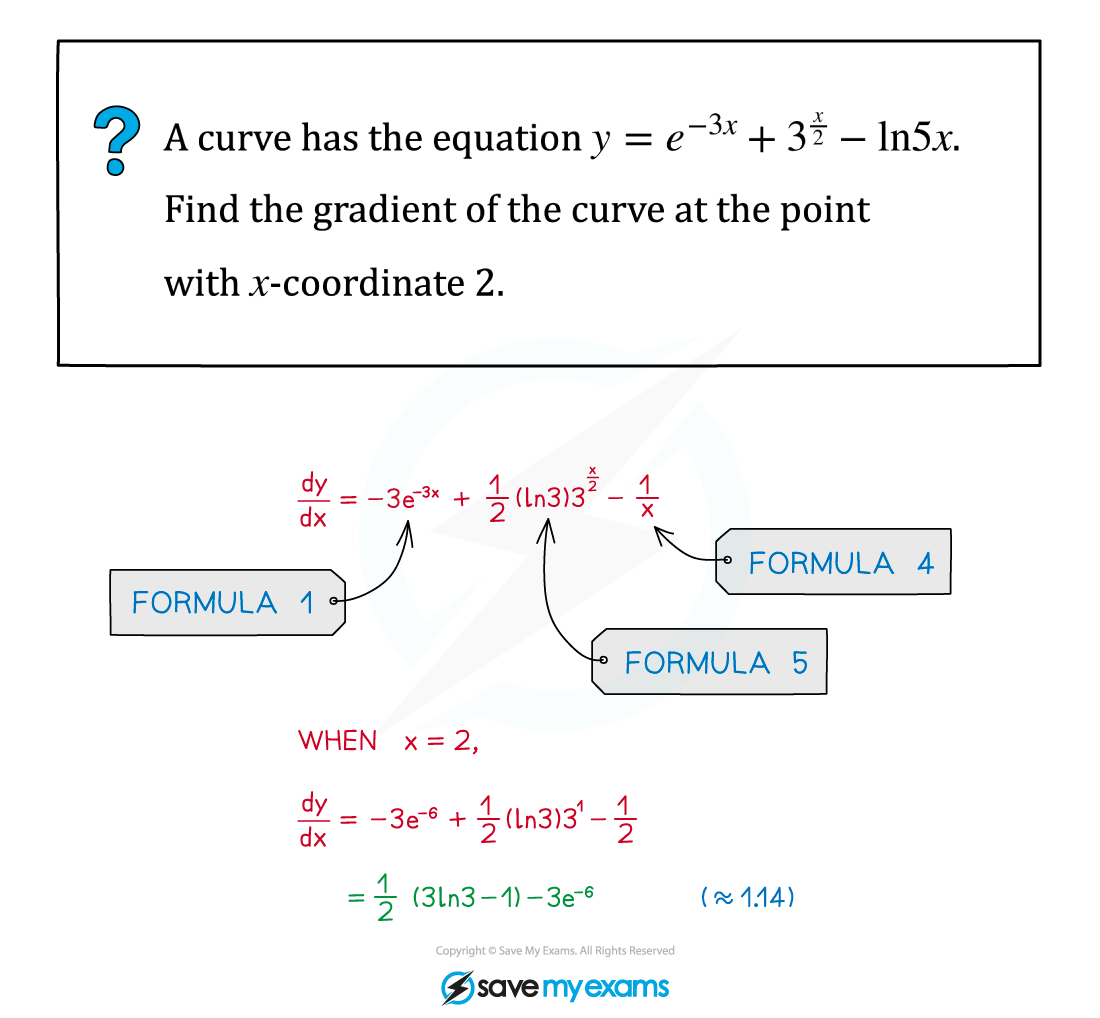Differentiating Other Functions (OCR A Level Maths A): Revision Note
Exam code: H240
Did this video help you?
Differentiating other functions
How do I differentiate common functions?
These are the common results
for
How do I differentiate ekx, ax, ln(kx) and akx?



And for akx:

This last formula can be derived from Formula 3 by using the chain rule
Examiner Tips and Tricks
The formulae for some of these derivatives are not given in the formulae booklet – you need to know them.
The formulae for ekx and ln x are the ones you absolutely do need to know .
The other formulae can be derived from those two as shown above, and remember – the derivative of ln kx is
, NOT
!
Worked Example


Unlock more, it's free!
Did this page help you?